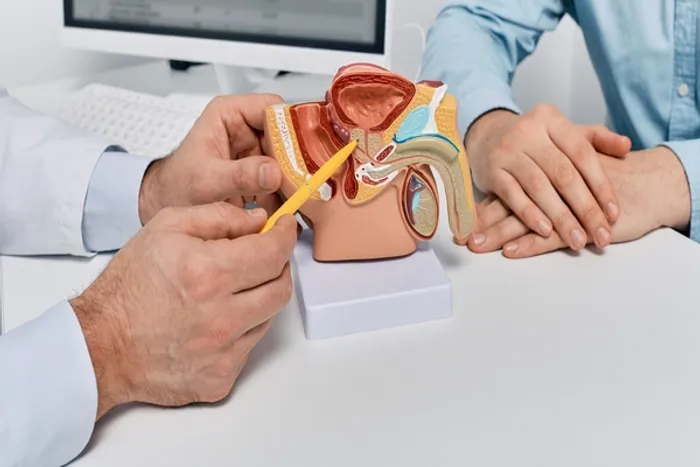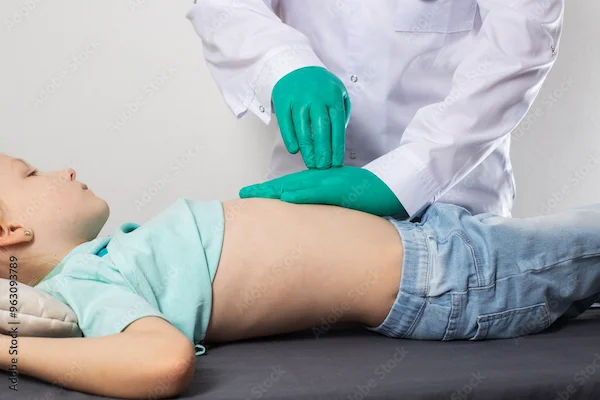When To Get Prostate Surgery Done?
Understand when prostate surgery is recommended for prostate cancer or BPH, types of procedures, recovery, risks, and how to make an informed decision.

Written by Dr. Mohammed Kamran
Reviewed by Dr. Dhankecha Mayank Dineshbhai MBBS
Last updated on 28th Oct, 2025

Introduction
Deciding whether and when to have prostate surgery can feel overwhelming. The decision often comes up in two common situations: prostate cancer and an enlarged prostate (benign prostatic hyperplasia, or BPH). In both cases, the goal is to balance the benefits of surgery against its risks and your personal priorities—like living without bothersome urinary symptoms, preserving sexual function, or treating cancer effectively. This guide explains how doctors decide if prostate surgery is the right move, what types of procedures exist, and how to prepare and recover. We’ll cover the evidence behind treatment choices, real-world examples, and what questions to ask your care team. If symptoms persist beyond two weeks or you’re unsure about your next step, consult a doctor online with Apollo 24|7 for personalised advice and to discuss if tests like PSA can be done via convenient home collection. By the end, you’ll understand when prostate surgery is recommended, what to expect, and how to make a confident, informed decision.
What the Prostate Does and Why Surgery is Sometimes Needed?
The prostate is a small gland below the bladder that helps produce seminal fluid. As men age, the prostate often enlarges (BPH), which can squeeze the urethra and cause urinary symptoms such as slow stream, frequent urination (especially at night), urgency, and incomplete emptying. In other cases, cells in the prostate become cancerous. Prostate surgery is generally considered in two contexts:
- Prostate cancer: removing the entire prostate (radical prostatectomy) can cure many men with localised disease.
- BPH: surgery opens up or removes obstructing tissue to improve urine flow when medications do not help or complications arise.
Although most prostate conditions are manageable without surgery, there are well-defined situations where surgery offers the best outcome, such as high-risk localised cancer or BPH causing urinary retention or kidney strain. For BPH, surgery primarily targets urinary flow and bladder emptying—it will not prevent future prostate enlargement, but the relief is typically durable, especially with procedures like TURP or HoLEP. For cancer, surgery aims for cure but can affect urinary and sexual function, so your baseline health, cancer risk, and personal values matter a lot.
Consult Top Specialists
Prostate cancer vs benign prostatic hyperplasia (BPH)
- Prostate cancer often has no early symptoms. Decisions hinge on PSA level, MRI and biopsy results, Gleason Grade Group, and clinical stage.
- BPH is benign but can significantly affect quality of life. Symptom severity (often measured by the IPSS score), anatomy (prostate size, obstructive lobes), and complications guide treatment choices.
Prostatitis and other less common reasons
Prostatitis (inflammation or infection) is usually treated with medication and does not require surgery. Rarely, surgery is considered for abscess drainage or persistent obstruction after scarring. Other infrequent surgical reasons include bleeding from enlarged prostate tissue (refractory haematuria) or bladder stones caused by obstruction.
How Doctors Decide if you Need Prostate Surgery
Doctors combine your symptoms, test results, and goals to determine the need for prostate surgery. They will ask how much symptoms bother you, your sexual health, and what trade-offs you are willing to make. They will also consider life expectancy and other medical conditions.
Symptoms and quality-of-life scores (IPSS)
For BPH, the International Prostate Symptom Score (IPSS) helps quantify severity and track response to treatment. Mild symptoms often get watchful waiting or medications; moderate-to-severe symptoms that persist despite medication—or that cause complications—may warrant surgery. You might also have a bladder diary to capture frequency and nocturia.
Tests: PSA, MRI, biopsy, uroflowmetry, and PVR
- Cancer work-up: PSA blood test, multi-parametric MRI, and prostate biopsy define the cancer’s grade and stage. MRI can spot significant lesions and guide targeted biopsy.
- BPH work-up: Uroflowmetry (how strong your stream is), post-void residual (PVR, how much urine remains), prostate size on ultrasound, and cystoscopy (if needed) help assess obstruction. Bloodwork looks for kidney strain; urinalysis rules out infection.
Risk stratification and life expectancy
For cancer, doctors categorise risk (low, intermediate, high) based on PSA, Grade Group, and tumour extent. Low-risk cancers may be safely monitored (active surveillance), whereas higher-risk localised cancers often merit surgery or radiation. Life expectancy matters: surgery is most beneficial when you are likely to live 10+ years so you can realise the cancer-control benefits. For BPH, absolute indications for surgery include complications like urinary retention or bladder stones; otherwise, quality-of-life and medication response guide the decision.
Prostate Cancer Surgery: When it’s the Right Choice
Radical prostatectomy (open, laparoscopic, or robotic) removes the entire prostate and seminal vesicles and often nearby lymph nodes. It is usually recommended for men with localised or select locally advanced prostate cancer who desire a definitive treatment and are good surgical candidates.
Localised and locally advanced cancer
- Low-risk cancer: Often managed with active surveillance; surgery is reasonable if you prefer to remove the cancer or surveillance feels risky.
- Favourable intermediate-risk: Both surgery and radiation are strong options; genomic tests and MRI can refine risk and help decide.
- Unfavourable intermediate- and high-risk: Surgery is commonly offered, sometimes with lymph node dissection; adjuvant or salvage therapy may be needed later if pathology shows aggressive features.
Nerve-sparing techniques may preserve erectile function when oncologically safe; the feasibility depends on tumour location and grade.
Active surveillance vs surgery vs radiation
Immediate surgery does not always extend life for low-risk disease but reduces the chance of spread and later treatment. Side-effect profiles differ: surgery tends to impact urinary continence and erections more early on, while radiation can bring bowel symptoms and later urinary issues.
Case example: 62-year-old with Grade Group 2
A 62-year-old with a PSA of 8 ng/mL, MRI-visible lesion, and biopsy Grade Group 2 (Gleason 3+4) might choose surgery if he wants definitive cancer removal and is comfortable with recovery trade-offs. If nerve-sparing is feasible and he has good baseline erections, he may recover sexual function over 6–24 months. If pathology shows organ-confined disease and negative margins, surgery alone may be curative.
BPH surgery: when to operate for an enlarged prostate
Here's when surgery for BPH is recommended:
BPH surgery is considered when medications fail or complications arise. The aim is to relieve obstruction, protect the bladder/kidneys, and improve quality of life. Procedures range from traditional TURP to laser enucleation (HoLEP) and minimally invasive options, depending on prostate size, anatomy, and preference.
Absolute indications
Surgery is indicated for BPH if you have:
- Refractory urinary retention
- Recurrent urinary tract infections caused by obstruction
- Bladder stones or significant bladder diverticula
- Recurrent or significant bleeding from enlarged prostate tissue
- Kidney impairment from long-standing obstruction
Failed medications and bothersome symptoms
If alpha-blockers and/or 5-alpha-reductase inhibitors do not adequately control moderate-to-severe symptoms, surgery may be recommended. HoLEP and TURP typically provide the greatest and most durable symptom relief and flow improvement, with low retreatment rates; minimally invasive options (e.g., UroLift, Rezum) can help selected men, especially those prioritising ejaculatory function and a quick recovery.
Case example: 70-year-old with retention
A 70-year-old with repeated urinary retention episodes, large residual volumes, and a 100-gram prostate may be best served by HoLEP or open/robotic simple prostatectomy rather than TURP, because very large glands respond well to enucleation or simple prostatectomy. If recurrent retention persists despite medication, delaying surgery risks bladder damage and kidney issues.
Types of prostate surgery and procedures
Here's how the type of surgery is chosen:
Choosing the right procedure depends on whether the goal is cancer removal or symptom relief from obstruction, your anatomy, and your preferences around recovery and sexual function.
Radical prostatectomy (open, laparoscopic, robotic)
- Goal: remove the prostate to cure localised cancer.
- Approaches: open (retropubic), laparoscopic, and robotic-assisted. Robotic surgery may offer less blood loss and faster recovery; cancer control depends largely on surgeon expertise.
- Lymph node dissection may be added for higher-risk cases to assess spread.
- Nerve-sparing: when safe, it may help preserve erectile function; however, cancer control is the priority.
TURP, HoLEP, and simple prostatectomy (for BPH)
- TURP: standard for moderate prostate sizes; removes obstructing tissue through the urethra.
- HoLEP: effective for small to very large prostates; “shells out” the adenoma, often with shorter catheter times and less bleeding; durable results in experienced hands.
- Simple prostatectomy (open/robotic): removes the inner prostate tissue in very large glands when endoscopic approaches are not ideal.
Office-based options (UroLift, Rezum) and when they’re used
- UroLift: implants to pull prostate lobes aside—often preserves ejaculation; suited for certain anatomies without a median lobe.
- Rezum: water vapour thermal therapy that shrinks tissue; typically preserves ejaculation more than TURP and HoLEP.
These have shorter downtime but higher retreatment rates than TURP/HoLEP in some studies; ideal for men wanting symptom relief with less impact on ejaculation and minimal recovery time.
Benefits, risks, and side effects—and how to reduce them
Here's what to know about risks and strategies:
All surgeries carry risks, but careful planning and technique can reduce them. Discuss risks in detail with your surgeon and ask about their personal outcomes.
Urinary incontinence and erectile dysfunction
- After radical prostatectomy, early urinary leakage is common; most men improve over months, though a small percentage have persistent stress incontinence requiring pelvic floor therapy or procedures.
- Erectile dysfunction is possible due to nerve impact; recovery depends on age, baseline function, and nerve-sparing. Many men improve over 6–24 months; PDE5 inhibitors, vacuum devices, or injections can help during recovery.
- After BPH procedures, long-term incontinence is uncommon, but transient urgency or frequency can occur as the bladder recovers.
Retrograde ejaculation and ejaculatory function
- Retrograde ejaculation is common after TURP and HoLEP and permanent for many men; it does not affect orgasm intensity or safety but changes fertility potential.
- UroLift and Rezum have higher rates of ejaculatory preservation, making them attractive for men prioritising this outcome.
Strategies to lower risk
- Choose an experienced, high-volume surgeon and centre; outcomes improve with surgeon volume.
- Discuss nerve-sparing and margin control for cancer. Ask about penile rehabilitation plans post-prostatectomy.
- For BPH, tailor the procedure to prostate size and anatomy. For very large glands, HoLEP or simple prostatectomy may minimise reoperations.
- Optimise health: stop smoking, manage blood sugar, strengthen pelvic floor pre-op, and confirm medications (e.g., blood thinners) are managed safely.
Preparing for surgery and recovery timeline
Here's how to prepare and what to expect:
Prehab, pelvic floor training, meds and devices
- Pelvic floor muscle training (Kegels) before radical prostatectomy can reduce post-op incontinence duration; learn correct techniques with a physiotherapist.
- Discuss penile rehabilitation (e.g., PDE5 inhibitors, vacuum devices) to support erectile function recovery after prostatectomy.
- For BPH surgery, plan medication adjustments and arrange help at home for the first week.
Hospital stay, catheter, return to activity
- Radical prostatectomy: 1–2 days in hospital; a urinary catheter typically stays 1–2 weeks. Walking early reduces clot risk. Most men return to light activity within 2 weeks and fuller activity by 4–6 weeks; heavy lifting may need longer.
- TURP/HoLEP: Many centres discharge patients within 24 hours; catheter times range from same-day removal to a few days. Expect some burning, urgency, or pink urine for days to weeks.
- Hydration helps flush the urinary tract; avoid straining and heavy exertion early on.
Rehab: Kegels, PDE5 inhibitors, penile rehab
- Continue pelvic floor exercises after catheter removal.
- Discuss early use of PDE5 inhibitors, vacuum erection devices, or other therapies post-prostatectomy to promote penile blood flow and function recovery.
If urinary leakage or erectile dysfunction persist beyond expected timelines, consult a doctor online with Apollo 24|7 for further evaluation and potential referral.
Costs, coverage, and choosing your care team
Here's what to know about costs and care selection:
Costs vary by country, hospital, and technique (robotic vs open). Insurance usually covers medically necessary prostate surgery, including radical prostatectomy for cancer and TURP/HoLEP for BPH when criteria are met. Out-of-pocket costs relate to deductibles, facility fees, and devices.
Questions to ask and decision aids
- What are my realistic cancer control or symptom relief outcomes with and without surgery?
- What is your experience with this procedure, and what are your rates of continence, erectile function, and complications?
- For cancer: Will you attempt nerve-sparing? Do I need lymph node dissection?
- For BPH: Is my anatomy better suited to HoLEP, TURP, simple prostatectomy, or a minimally invasive option?
- What is the plan if pathology or symptoms are not as expected?
Decision aids from reputable cancer organisations can help clarify preferences.
Finding high-volume centres
Surgeon and centre experience affects outcomes for both radical prostatectomy and BPH surgeries. Look for:
- Board-certified urologists with high annual case volume
- Multidisciplinary teams (for cancer: tumour boards, radiation oncology)
- Access to pelvic floor therapy and sexual health support
- Transparent outcomes data if available
Getting help and next steps
If you are experiencing persistent urinary symptoms, blood in the urine, or concerning changes in PSA, book an online consultation with Apollo 24|7 to triage next steps. If lab tests are needed, Apollo 24|7 offers convenient home collection for PSA and other related tests.
A second opinion is common and useful, especially for prostate cancer treatment choices.
Real-world outcomes: what recent studies show
Here's what studies reveal:
- Among men with localised prostate cancer, long-term mortality was low across active monitoring, surgery, and radiotherapy, though metastasis and disease progression were more frequent with monitoring. For many low-risk cases, this supports considering active surveillance; for intermediate-risk disease, it underscores the value of definitive therapy to reduce spread.
- BPH surgery outcomes: TURP remains a benchmark for symptom relief; HoLEP demonstrates durable improvements across all prostate sizes with low bleeding risk and short catheter times in experienced centres. Minimally invasive therapies provide quicker recovery and better ejaculatory preservation but may carry higher reintervention rates over time.
- Quality-of-life: Radical prostatectomy can temporarily impact urinary control and erections; most men improve over months, especially with prehab/rehab. Radiation has different side-effect timing, with potential late urinary or bowel effects.
Conclusion
Choosing when to get prostate surgery is about aligning the right treatment with your goals, health status, and the specifics of your condition. For prostate cancer, surgery offers excellent cancer control for many men with localised or locally advanced disease, particularly in intermediate- and high-risk cases. For BPH, surgery can dramatically improve urinary symptoms and prevent complications when medications are no longer enough. The best decisions come from careful evaluation—PSA, MRI, biopsy, and risk stratification for cancer; symptom scoring, flow testing, and imaging for BPH—combined with an honest discussion of benefits, risks, and what matters most to you. Experienced surgeons, nerve-sparing when appropriate, and proactive rehab can help optimise recovery and quality of life. If you are navigating these choices now, consider a prompt consultation with a urologist. If your symptoms persist or your condition does not improve after trying conservative measures, book a physical visit to a doctor with Apollo 24|7 for a full examination and to plan next steps. With the right information and team, you can choose confidently and move forward with clarity.
Consult Top Specialists
Consult Top Specialists

Dr. Rohit Bhattar
Uro Oncologist
14 Years • MBBS, MS, MCh (Urology), Fellowship in Uro-oncology and Robotic Urology (United Kingdom)
Ahmedabad
Apollo Hospitals Gandhinagar, Ahmedabad
(100+ Patients)

Dr. Gaurab Dasgupta
Urologist
14 Years • MBBS, MS General Surgery, MCH Urology, FMAS
Kolkata
MCR SUPER SPECIALITY POLY CLINIC & PATHOLOGY, Kolkata
Dr. J Chaithanya
Urologist
6 Years • MBBS MS GENERAL SURGERY MCH UROLOGY
Bengaluru
Apollo Medical Center, Marathahalli, Bengaluru

Dr. Deepak Sharma
Urologist
15 Years • MBBS, MS (General Surgery), DNB (Genito Urinary Surgery)
Gurugram
Dr Deepak Sharma's Urology clinic, Gurugram
Dr. Mohammed Rehan Khan
Urologist
8 Years • MBBS, MS (General Surgery), Mch (Urology)
Barasat
Diab-Eat-Ease, Barasat
Consult Top Specialists

Dr. Rohit Bhattar
Uro Oncologist
14 Years • MBBS, MS, MCh (Urology), Fellowship in Uro-oncology and Robotic Urology (United Kingdom)
Ahmedabad
Apollo Hospitals Gandhinagar, Ahmedabad
(100+ Patients)

Dr. Gaurab Dasgupta
Urologist
14 Years • MBBS, MS General Surgery, MCH Urology, FMAS
Kolkata
MCR SUPER SPECIALITY POLY CLINIC & PATHOLOGY, Kolkata
Dr. J Chaithanya
Urologist
6 Years • MBBS MS GENERAL SURGERY MCH UROLOGY
Bengaluru
Apollo Medical Center, Marathahalli, Bengaluru

Dr. Deepak Sharma
Urologist
15 Years • MBBS, MS (General Surgery), DNB (Genito Urinary Surgery)
Gurugram
Dr Deepak Sharma's Urology clinic, Gurugram
Dr. Mohammed Rehan Khan
Urologist
8 Years • MBBS, MS (General Surgery), Mch (Urology)
Barasat
Diab-Eat-Ease, Barasat
More articles from General Medical Consultation
Frequently Asked Questions
How do I know if I should choose prostate surgery or radiation for cancer?
For localised prostate cancer, both surgery and radiation can be effective. Decisions depend on risk group (PSA, Grade Group), age, other health issues, and personal preferences about side effects. Ask about active surveillance if you have low-risk disease. Discuss both options with a urologist and radiation oncologist.
When is BPH surgery better than medication?
Surgery is preferred if you have urinary retention, repeated infections, bladder stones, bleeding from the prostate, kidney impairment, or if moderate-to-severe symptoms persist despite medications. TURP or HoLEP generally offer the most durable relief for an enlarged prostate.
How long does recovery from radical prostatectomy take?
Many men leave the hospital within 1–2 days and have a catheter for 1–2 weeks. Light activity usually resumes within 2 weeks, with gradual return to normal by 4–6 weeks. Continence and erectile function can take months to improve. Pelvic floor exercises and penile rehabilitation may help.
Will BPH surgery affect my sexual function?
TURP and HoLEP often cause retrograde ejaculation, which changes semen direction but not orgasm sensation. UroLift and Rezum may better preserve ejaculation. Erectile function is usually maintained after BPH surgery, though temporary irritative symptoms can occur.
What tests do I need before deciding on prostate surgery?
For cancer: PSA, MRI, targeted/systematic biopsy, and risk stratification. For BPH: IPSS symptom score, urinalysis, uroflowmetry, post-void residual, prostate size on imaging, and possibly cystoscopy. Apollo 24|7 offers convenient home collection for PSA and related bloodwork.




.webp)